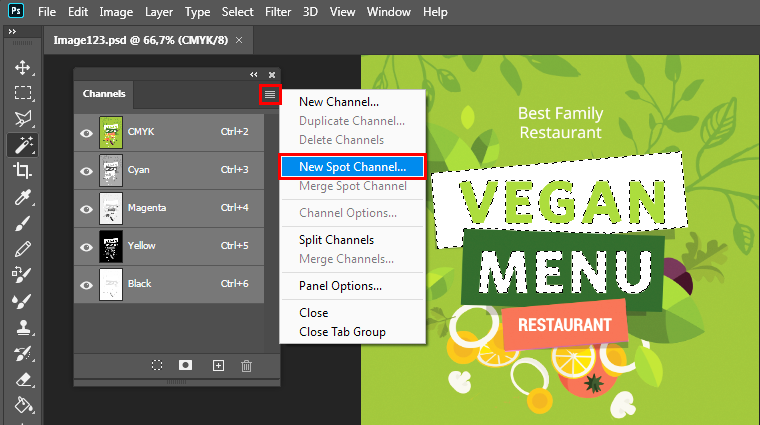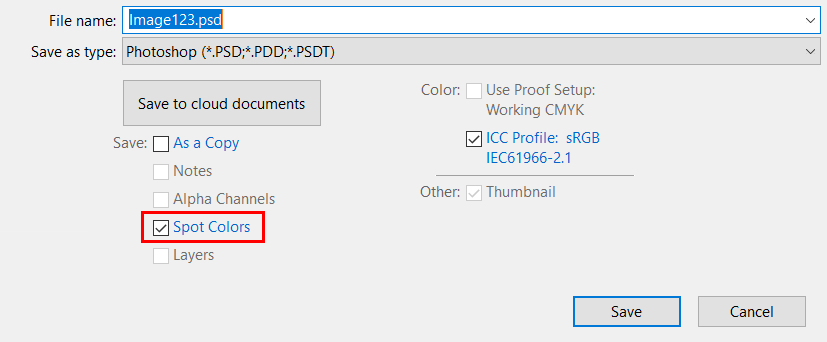

This section explains how to prepare raster- based images to print files with spot colors. In Adobe Photoshop you can create spot channels to define white or gloss elements of a print job. There are two spot channels available: Spot1 and Spot2. In general Spot1 data is used for defining white areas and Spot2 data is for defining varnish/gloss areas.
It is possible to have more than one spot element in an image, but each element must be on the same spot channel, and therefore have the same opacity level, or else ONYX Thrive will treat the saved document as a separation file. CMYK is the preferred image mode as the actions required for spot data creation are simpler than those for RGB.
Obtain and import an ONYX media profile (media model) that is set to Quality-Layered print mode. Media profiles are available for download from the website: https://graphiplaza.cpp.canon
You can use raster-based image editing applications other than Adobe Photoshop as long as it has the ability to create spot channels.
Use the following steps to create a spot channel layer:
The image file used in this example is for illustration purposes only. For best results when working with text, we recommend that you use a vector-based program such as Adobe Illustrator.

Name – The name you assign to this spot channel layer must be Spot1 or Spot2 and is the most important part of preparing the file. This named channel allows the ONYX RIP-Queue to determine that the data needs to be output to the spot channel. Spot1 is reserved for white and Spot2 for varnish/gloss data.
You can use different names for the spot channels. For instructions on how to use a naming convention other thanSpot1 or Spot2, refer to How to Name Your Spot Data
Solidity – Set the solidity to 10%
Edit the Color by double-clicking on the swatch. This color can be any value that will help you see the design better. Remember that white can be hard to distinguish


 Save with Spot Option
Save with Spot OptionIf you intend to use this file in a vector-based program such as Illustrator, save it as a .PSD file in order for all channel information to be carried over. When exported as a .PSD to Adobe Illustrator, this data will appear above the image data. This is the correct format protocol. Always embed the image after you have imported it in Adobe Illustrator.
